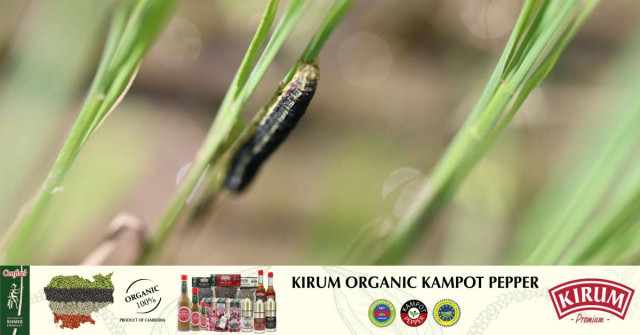Tigers from India to Be Let Free in the Cardamon Mountains by the End of the Year

- By Chhum Chantha
- May 26, 2024 12:01 PM
PHNOM PENH — Cambodia will be ready to reintroduce tigers in the Cardamom Mountains by the end of 2024 when four tigers—three tigresses and one tiger—are expected to be sent from India to the country.
According to Ministry of Environment Secretary of State Chea Samang, all is in place for the arrival of the tigers as the adaptation sites, monitoring centers and technical facilities have been put in place.
During the “Tiger Re-Introduction Strategy in Cambodia” conference held in Phnom Penh on May 23, Indian Ambassador Devyani Khobragade said that “[t]he first phase of the delivery could take place in November or December.
“However, plans might be delayed if Cambodia experiences continuous rainfall, affecting the adaptation of the creatures,” she said. “Rainy season is not the favorable period to send the tigers to Cambodia because heavy and irregular rainfalls make it difficult for tigers to adapt.
“If the weather is favorable, we will try to send the tigers to Cambodia as soon as possible,” Khobragade said. The project is part of a Memorandum of Understanding that Cambodia and India signed in 2022 in an effort to bring wild tigers back in the country.
As was mentioned at the conference, an Indochinese tiger was last spotted by a camera trap in Mondulkiri province in 2007, and no other tiger has since been seen. This will be the first time that India helps Cambodia re-inducting tigers in the wild, making this a historical event, Khobragade said. Cambodia and India have a close-ties relationship, she said, adding that she is proud to have the two countries join hands to preserve the tigers.
At the present time, there are around 3,500 tigers, in India making it the only country with a largest population of tigers as there are only 5,000 tigers in the rest of the world.
Cambodia is preparing to receive the tigers from India
During the conference, Ministry of Environment Secretary of State Chea Samang stressed that Cambodia is ready to receive the tigers from India as adaptation sites, monitoring centers and technical facilities have been put in place.
Referring to illegal poaching, he said that there is not a single snare in the core location of the tigers of the 1.4 million-hectare Cardamom Mountains forest, adding that the Ministry of Environment and the Wildlife Alliance will organize a rich environment with other animals to ensure food and shelter for the tigers.
Might the tigers present a threat for people living near the Cardamom Mountain Protected Area?
While the tigers might be a threat for people living near their territory such as killing domestic animals or causing harm to people, preventive and conservation measures will be taken and information widely disseminated among local residents, Chea Samang said.
The core area of the tiger rehabilitation project is set at a distance of about 25 kilometers from a village, he said. If a tiger kills people's livestock, these people will be compensated, he added.
As a security measure, the four tigers will be equipped with day-and-night movement tracking systems so that human-tiger conflicts can be avoided. In addition, 410 cameras are being set up on trees, which is the largest number of cameras ever put in operation to track wildlife and collect data, Samnang said.
“More or less, this carnivore can cause unexpected accidents for the residents nearby, especially their livestock,” Samang said. “But with the tracking systems, we will be alerted immediately if they roam around the village, and we will then alert the villagers.”
Why in the Cardamom Mountains?
More than 20 years ago, the Cardamom Mountains were severely deforested, and wildlife was hunted indiscriminately. In view of such devastation, the Cambodian government asked the Wildlife Alliance to help with conservation measures.
So, for the last two decades, the Wildlife Alliance has been working with the Cambodian authorities on the protection and conservation of the Cardamom Mountains.
Chea Samang said that having the tigers can help boost tourist activities in the area as these animals will be a testament to the richness of biodiversity in the Cardamom Mountains, helping to balance the wildlife and ecosystem in the forest and the stability that supports plant and animal life.
“[Following] 20 years of our protection work, I see that the Cardamom Mountains have become a safe haven and with enough potential for the restoration of this species,” said Suwanna Gauntlett, head of the Wildlife Alliance.
The Cardamom Mountains cover more than 1.5 million hectares in southwestern Cambodia and are home to many endangered natural resources and mammals such as the Asian elephants.
The big tiger is the largest of the cats and is easy to spot because of its reddish-yellow or light brown color with black stripes across its body. The lower part of its chin and throat are white, while its tail has black stripes and black at the end.
Biologically, the tiger can live in all kinds of habitats with enough water, food and shade. When the day is very hot, it takes many hours to sleep soaked in water. This animal is very good at swimming and does not climb trees if not needed. It can reproduce every season and can produce one to seven offspring after about 100 days of gestation. A tiger can live as long as 25 years.
The big tiger is an endangered species listed in Appendix I of the Convention on International Trade in Endangered Species of Wild Fauna and Flora Convention known as CITES. This species of tiger is endangered due to poachers who hunt them for their skin and for commercial use. The big tiger is also listed on the International Union for Conservation of Nature (IUCN) Red List as an endangered species.
Teng Yalirozy contributed to the story.

















